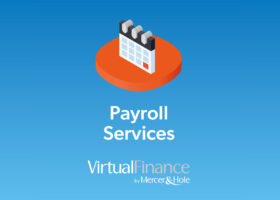There are a number of situations which may require a company to be valued, for example when it is being bought or sold; or seeking investment; in a divorce settlement; or for tax purposes, such as the implementation of an employee incentive scheme.
How to Value Shares in a Private Limited Company
In the absence of a stock market quoting the price of the shares, the valuation of a private company can be a challenging process, where a number of key assumptions need to be considered. It is generally accepted there is no single correct way of valuing the shares of a private company, but by building an in-depth understanding of the company and the market it operates in, a valuation expert will be able to assist in arriving at a reasonable estimate of the value of your business.
Private Company Share Valuation Methods
There are three main approaches for valuing businesses, based upon:
- Assets
- Earnings
- Cash flow
Asset value:
Using an asset value approach, the company value is estimated to be worth the value of its assets less its liabilities, taking no account of future earning potential. The amount calculated represents what would be left for shareholders if the assets of the company were sold at market value and its liabilities settled.
This method is most appropriate in the case of stable, asset-rich businesses, such as property or investment companies.
Private Company Valuation Formula:
The price/earnings (P/E) valuation methodology is one of the most widely used valuation techniques. Under this approach, the value of the company is calculated by applying an earnings multiple to the normalised or underlying profit of the business. The most contentious area of this approach comes in arriving at a suitable multiple to apply and the measure of profit to use.
Ideally, the multiple applied would be based on a published P/E ratio applicable to an equivalent quoted company. However, difficulties often arise when trying to find a comparable quoted company for private businesses.
There are a number of sources for private company multiples, including industry publications and specialist websites. An alternative approach might be to undertake research to identify completed deals in the relevant sector and calculate the multiple achieved. Whilst this requires more research, it often results in a more relevant multiple.
In calculating the value, the multiple is applied to the normalised profit figure of the business.
In deriving the profit figure used for the basis of the valuation, any one-off costs or income which are not considered reflective of the normalised trading of the business are added back or deducted to arrive at a normalised profit. Examples of such costs include redundancy costs or legal fees. Often adjustments are also made to costs incurred by the business which are not considered to be inline with the market rate, the most common being directors’ remuneration or rental costs on business property owned by the shareholders.
Cash flow based:
The value of any company lies primarily in its ability to generate future cash flows and it is widely agreed that one of the purest methods of valuation is the discounted cash flow valuation. This approach seeks to estimate the value of a company based on expected future cash flows, which are then discounted to present value to reflect risk and the time value of money.
This approach relies on:
1) the availability and accuracy of the forecasts which the valuation is based upon, and
2) calculating an appropriate discount rate to apply to the earnings
Ideally, the forecasts will be between 3 – 5 years in length and will include a profit and loss account, balance sheet and cash flow. Given the reliance on future trading performance, the methodology is subjective if forecasts are not robust and reliable.
The most widely recognised method for calculating the discount factor is the Capital Asset Pricing Model (CAPM). This model is used to arrive at an appropriate discount rate by identifying the investors’ required return for the risk associated with the investment.
Once the cash flows have been accurately forecast then the discount rate can be applied to arrive at a valuation.
Conclusion
Given the different methods available and the importance of reasonable assumptions, an accurate valuation relies on a combination of analysis, expertise and professional judgment. Whilst it is important for business owners and potential purchasers to understand what can influence the value of a company, it is always recommended that professional advice from an independent valuation expert is obtained.
At Mercer & Hole, our Corporate Finance team regularly advise on valuing businesses. If you would like to discuss the relevant basis of valuing your business, do not hesitate to contact me or a member of our Corporate Advisory team.







 8 mins
8 mins 

